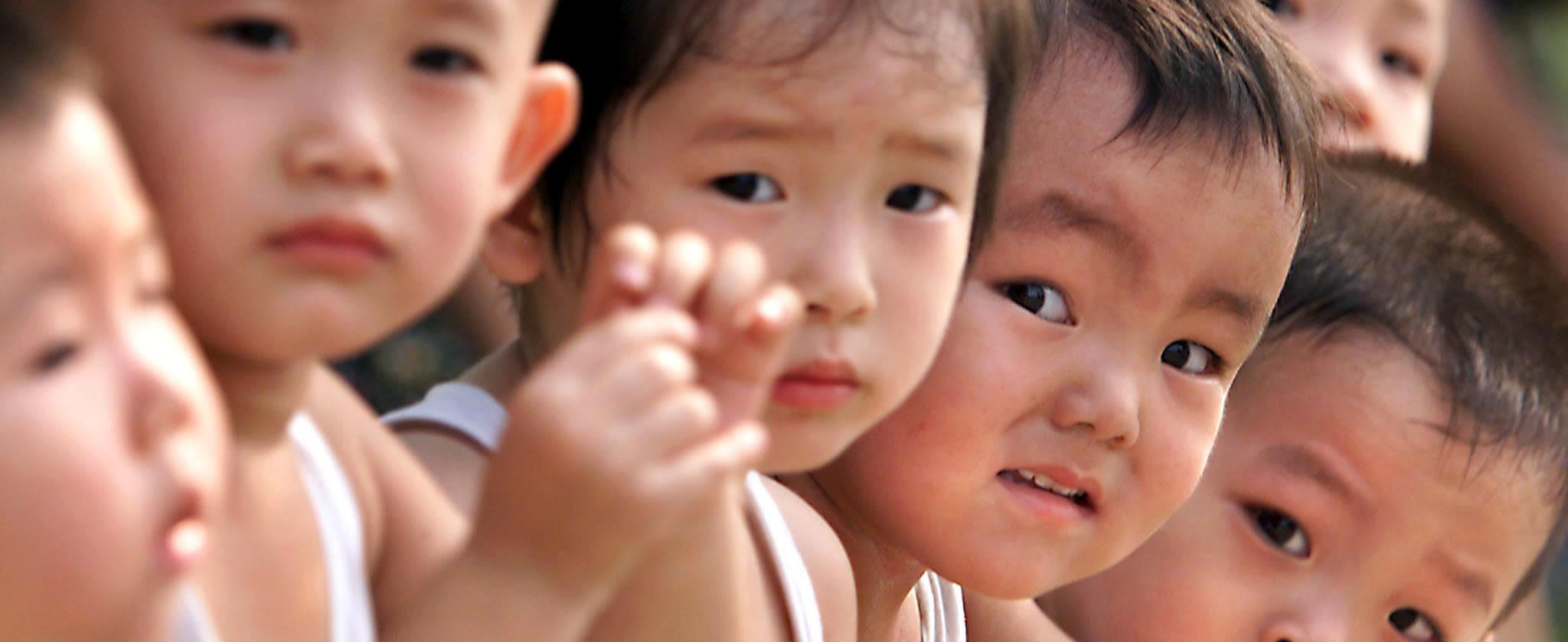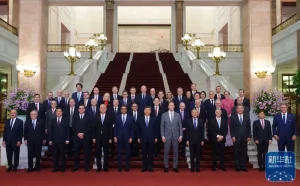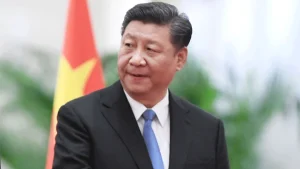How Do Chinese People View China Ending International Adoptions?

On September 5th, China’s Foreign Ministry spokesperson Mao Ning made an announcement that put an end to a three-decade-long practice:“Apart from the adoption of children from one’s collateral relatives by blood of the same generation… China will not send children abroad for adoption.”
Based on statistics from China’s Ministry of Civil Affairs and the U.S. Department of State, 160,000 Chinese children have been adopted by foreign families since China legalized the practice of international adoptions in 1992, with the majority of them being girls. This massive number made China one of the largest sources of international adoptions. What awaited these 160,000 children was nothing short of a grand gamble, and the stakes were high- we found cases where they were embraced by love and warmth, but also instances where inhuman cruelty was inflicted upon them.
 Olivia Atkocaitis, adopted from a Hunan Province orphanage, now 19, alleges in a lawsuit that her parents kept her from attending public school and imprisoned her in their basement.
Olivia Atkocaitis, adopted from a Hunan Province orphanage, now 19, alleges in a lawsuit that her parents kept her from attending public school and imprisoned her in their basement.
For this widely discussed piece of news both in China and abroad, we’ve compiled media reports and discussions from around the world to analyze the underlying mentality revealed by their narrative tone. Spoiler alert: Western mainstream media did not shed their infamous arrogance.
Non-Chinese Media: Family Planning, China’s Conspiracy, Sympathy for Adoptive Families
The Wall Street Journal revisited a case of international child trafficking involving Chinese children. Among the many details, the news outlet highlighted a claim from one of the suspects, who said they were doing good work to save the abducted children from death.
The New York Times devoted a third of its coverage to describing gifts sent by would-be adoptive families to children in China, video calls with orphans, and the anxiety these families felt upon hearing the news. Their editorial stance screams through the subtitle of its article: “Many would-be adoptive families were left in limbo.”

The BBC’s report, on the other hand, stands as a proud collector of various perspectives from American media outlets on China’s overseas adoption. For example, it claims that China’s one-child policy forced parents to abandon their children and implies that there were undisclosed reasons behind the decision to end international adoptions.
In addition, China’s declining birth rate, burgeoning national pride and China-US competition were all cited as potential reasons for China’s policy adjustment, with no mention of the impact it can have on the welfare of the adopted children, such as reducing human trafficking.
Russia Today takes a more neutral tone by comparing the overseas adoption policies of China, Russia, Norway, and Denmark, highlighting the concerns that various countries have about this practice. The report emphasizes worries about forged documents from adoptive families and issues related to the identity challenges faced by adopted children.
Now let’s move on to how the policy adjustment is viewed in China. Many who have commented on the issue are witness to China’s economic transformation and are themselves products of the one-child policy.
Chinese Media Editorials: “This Should Have Ended Long Ago” vs. “We Could Have Waited”
The most active Chinese political news website, Guancha.cn, whose stance often aligns with the government, published an editorial titled “International Adoption Should Have Ended Long Ago” shortly after the announcement. It has since garnered over 60,000 views.
The author of the editorial, Yuan Ye, traced the history of China’s international adoption policy over the past 30 years in his article. The practice was initiated in the early days of China’s reform and opening-up when China’s economy was still fragile, with a GDP per capita of only a few hundred dollars. At that time, living conditions for ordinary families lagged far behind those in Western countries, and China’s social welfare system was not yet robust enough to ensure all orphans received adequate care. Coupled with outdated notions like the preference for sons over daughters, allowing international adoption became a practical solution for placing some orphans.
 Shanghai’s Pudong district through the years. /Photo from Shanghai government
Shanghai’s Pudong district through the years. /Photo from Shanghai government
The article also mentioned that international adoptions peaked at 13,000 in 2005, after which China tightened its adoption policies in response to child trafficking scandals exposed by CCTV and Xinhua News Agency. In 2023, there were only 16 cases of international adoptions from China to the U.S.
The author specifically mentioned: “Between 2014 and 2018, there were 97,819 adoption registrations nationwide. Foreigners adopted 12,238 children, of which 11,468 were disabled, accounting for 95% of international adoptions.” This data does not include the proportion of Chinese people adopting disabled children, but the undeniable goodwill of foreign families toward disabled Chinese children is widely recognized in China.
According to the data provided by the author, the reduction in the number of adoptions aligns with the decline of orphans in China. “In 2013, the number of orphans in China was 549,000, but by the end of 2023, this number had decreased to 144,000, a reduction of over 73% in a decade.”
The author believes that China’s current economic conditions, along with domestic families wishing to adopt, meet the need to care for Chinese orphans. The policy change “is to prevent more unfortunate children from being forced to leave their homeland.”
In contrast, a more liberal editorial from Caixin titled “An Alternative Perspective on China’s International Adoption Policy Adjustment” expressed regret that “heartwarming and loving stories may now become a thing of the past,” noting that many children might lose the opportunity to live with a family abroad.
The article suggests that policy-makers “should keep international adoption as an option for children who are difficult to place.” It also elevates the issue of child adoption to the level of China-U.S. diplomacy, stating that “President Xi Jinping has repeatedly emphasized that the foundation of China-U.S. relations lies in the people. We have always placed our hopes on the American people and hope that the friendship between the two nations’ people continues.”
We cannot determine whether Chinese people lack the compassion the author so terribly fears might be lost on the orphans once overseas adoption ceases, but the responsibility for any issue in the Sino-US relations should likely fall on adults, not the children.
Chinese Netizens: ‘Many Kind Families Abroad, But Chinese Children Should Be Raised by Chinese Families’
To better understand the opinions of ordinary people, we have gathered responses from “Zhihu”, the Chinese version of Quora. These responses illustrate the wide spectrum of opinions on this issue from China fall on.
As of now, 160 responses have been directed towards the question: “What are the key points to note regarding the Ministry of Foreign Affairs’ response to the adjustment of the international adoption policy?”
The top-voted response on Zhihu comes from @青陆, with 516 upvotes and a focus on the risks of international adoption. The commenter has highlighted cases of child abuse and sexual exploitation abroad, such as Lolita Island, and touched on the financial aspect of international adoptions, as reported by Chinese media.
(Editor’s note: According to China Central Television (CCTV), the overall cost of overseas adoption is around $5,000 per child for the adoptive family. Approximately $3,000 is donated directly to the welfare institution, for which the adopters receive an invoice and a certificate of honor. The China Adoption Center also charges $365 for a review fee and $200 for a translation fee. The cost of processing documents is roughly $800. Source: CCTV Report.)
This commenter supports ending international adoptions, stating, “Children are the flowers of the motherland. Even abandoned orphans should not be given to foreigners for adoption.”
The response from @S申鹤姐姐的跟班(57 upvotes) further explained the complexities and costs involved in international adoption. The commenter noted that:
• All application materials must be translated by a Chinese government-approved professional translation company.
• The Chinese authorities conduct a thorough and strict background investigation of the adopting family.
• During the application process, families are typically required to travel to China at least two to three times for interviews and other evaluations.
• All expenses are borne by the adopting families, and the entire process takes at least six months to a year.
He expressed confidence in the commitment of these adopting families, stating, “Families that are able to complete this process are usually genuinely committed to adopting a Chinese child and providing them with warmth.”
 Spanish couples with their newly adopted Chinese children, in Beijing in 2007.Credit…Greg Baker/Associated Press
Spanish couples with their newly adopted Chinese children, in Beijing in 2007.Credit…Greg Baker/Associated Press
China’s law on this issue, the “Measures for the Registration of the Adoption of Children by Foreigners in the People’s Republic of China” (1999), lists the requirements for foreign adopters as follows:
• Age: between 30 and 50 years old.
• Net family assets: must exceed $80,000.
• Family income: at least $10,000 per family member per year, including the adopted child.
• Body mass index: must not exceed 40 (to avoid obesity).
• Mental health: adopters must not have a history of taking antidepressants or other psychological conditions.
@古都闲云 (232 likes) discussed the historical context of international adoption. The commenter noted that the policy shift in 1992 to allow international adoptions was driven by concerns over potential population explosions and the impact of China’s one-child policy, which led to the abandonment of many female and disabled infants. The author argued that the relaxation of adoption policies at the time was a practical response to domestic challenges. The acknowledged that ending international adoptions might reflect a broader worry about declining birth rates. The commenter suggested that future policies, such as stimulating birth rates and encouraging immigrants, should not be put in place without the necesarry adjustment of outdated policies.
@你说的对你赢了 (212 likes) lamented the end of international adoptions, and the potential loss of opportunities for these children, such as the American-born Chinese girl “Xiao Xiang Jun” and the Canadian swimmer “Maggie McNeill.”
 In 2016, a girl from Guizhou, China, widely known to Chinese netizens as “Xiao Xiangjun,” was adopted by a Chicago couple, Becca and Dan, who renamed her Selah.
In 2016, a girl from Guizhou, China, widely known to Chinese netizens as “Xiao Xiangjun,” was adopted by a Chicago couple, Becca and Dan, who renamed her Selah.
@知乎不让再叫麻醉 (195 likes) shared his personal experience as his spouse used to work in the field of international adoptions, particularly with families from Spain. He summarized international adoption as a generally positive experience for both the orphans and the adopting families, providing for the orphans care that domestic orphanage could not .
@不再沉默 (42 likes) criticized the association of international adoptions with child abuse, providing examples of foreign adoptive families who have provided excellent care for disabled children. The commenter attributed the usually sound economic background as part of the reason for their benevolence.
@没有 (80 likes) dismissed the praise for foreign compassion, noting that the U.S. has 108,000 orphans who need adoption and Canada has 30,000 children waiting for adoption. The commenter urges these two countries to care for their own domestic orphans first before turning to international adoption.
@SmileyWalker (78 likes) offered a balanced perspective, stating that regardless of how well foreign families treat adopted Chinese children, China should not ignore its own responsibilities in addressing orphan issues.
@南瓜君 (65 likes) expressed gratitude towards foreign families who adopt and raise Chinese children but criticized attempts to use this issue to promote American values.
The commenter pointed out that while the U.S. is the largest adopter of Chinese children, Chinese citizens themselves are the majority adopters. According to statistics from China’s Ministry of Civil Affairs, from 2014 to 2018, out of 97,819 adoptions registered in China, 85,581 children were adopted by Chinese citizens (87.5% of the total).
 More than 202,000 US children have lost one or both parents to Covid-19, according estimates from Imperial College London.
More than 202,000 US children have lost one or both parents to Covid-19, according estimates from Imperial College London.
The commenter also referenced a 2021 statement from Zhao Yong of China’s Ministry of Civil Affairs, noting that the significant decrease in the number of orphans has led to underutilized resources in child welfare institutions, with nearly 70% of county-level child welfare institutions caring for fewer than 10 children.
“It’s progress, but it’s progress ‘back to the right track.’”
During an interview by the China Academy team, Ma Qianzu (@马前卒), a Chinese opinion leader with over 3 million followers, described the policy adjustment as “a progress back to the right track”. Ma is known for his advocacy for “socialized child-rearing” in response to China’s current low birth rate. He supports a system where the state plays the primary role and families provide supplementary support in raising children. His approach includes measures such as providing universal accident insurance for children and using electronic devices to protect children from domestic abuse.
His believes the policy shift represents “overall progress, but it can only be considered progress when compared with past extreme events. Let’s hope this progress brings orphan care back to the right track.”
Ma Qianzu, born in the 1980s as part of the one-child generation, grew up in a mining area. Reflecting on China’s past, he argues for the necessity of the one-child policy from an ecological perspective: “From the 1970s to around 2005, China’s ecological environment was on the brink of collapse due to population explosion. In winters, when some rural familes couldn’t afford coal stoves, which were direct causes of severe smog anyway, they often opted for burning wood. Imagine the extent of soil erosion and vegetation loss if China’s population growth had not been curbed.
 A 1985 billboard in Chengdu, China, extolling the virtues of the country’s one-child policy.
A 1985 billboard in Chengdu, China, extolling the virtues of the country’s one-child policy.
The family planning policy from the 1970s to the 1990s, on one hand, limited population grouth, preventing devastating use of natural resources when the country was about to launch comprehensive industrialization. On the other hand, it reduced the child-rearing pressure on rural populations, allowing women to work outside of their hometowns and providing the Chinese industry with the world’s most cost-effective labor. This attracted global consumer goods supply chains and drove China’s complete urbanization and industrialization. Without the family planning policy, China’s comprehensive industrialization might have been navigated in a more dangerous manner, and there was a significant likelihood that China would have been overwhelmed by population and environmental collapse.”
“From a historical perspective, we should still support the 1990s’ societal consensus of industrialization and population control.”
He also commented on the early 20th-century events where family planning officials forcibly took children to be adopted by foreigners. “Some families seeking redress from the government had already had seven children before the event and were not concerned about fines. If I were a grassroots official, I couldn’t think of a more gentle way to solve the problem, except for taking away the children or forcibly sterilizing people.”
Ma acknowledged that violent enforcement led to discretionary power, “which could be used for bribery, retaliation, and of course, to cover up the international population industry chain.”
“For these historical issues, if there is clear evidence, punishment should be imposed. But from a historical perspective, the harms brought by a nation’s inevitable decision cannot be solely blamed on the individuals involved. The family planning policy lasted only one generation, and indeed, a well-thought-out legal system or sufficient financial support were not available to the grassroots officials.”
(Ma’s commentary on the American film Civil War can be viewed here: Civil War: A Desperate Message Delivering to the Next Generation)
In the process of gathering information, we note the heavy mood of Chinese netizens, as well as their disappointment and frustration towards the China’s past. However, unlike finger-pointing from the Western media on China’s family planning policy without considering historical context, Chinese netizens are unified on one point: contemporary Chinese people should take greater responsibility for raising their own children, regardless of historical reasons.
Editor: Zhongxiaowen
To read more “How Do Chinese People View”:
How Do Chinese People View Mongolia’s Reluctance to Arrest Putin?
How Do Chinese People View the Arrest of Telegram Founder



